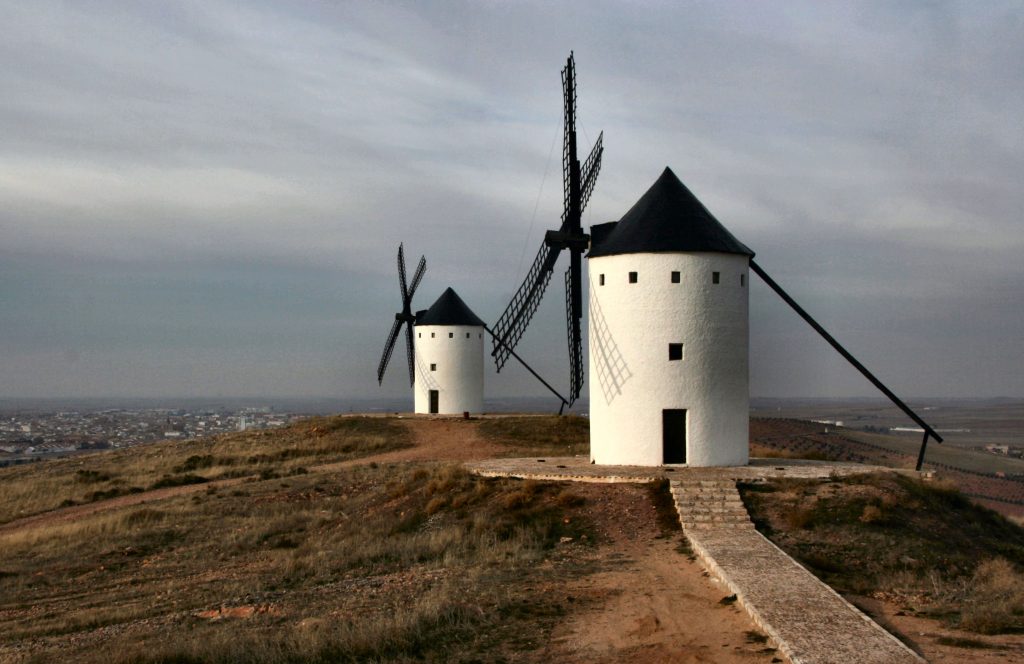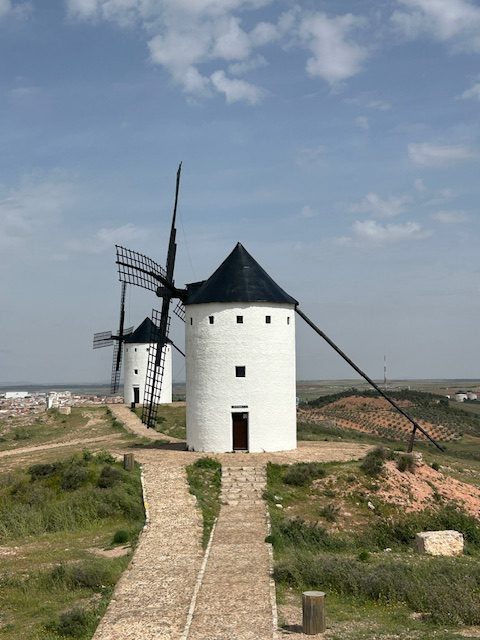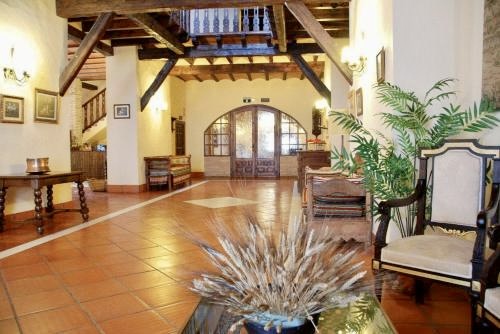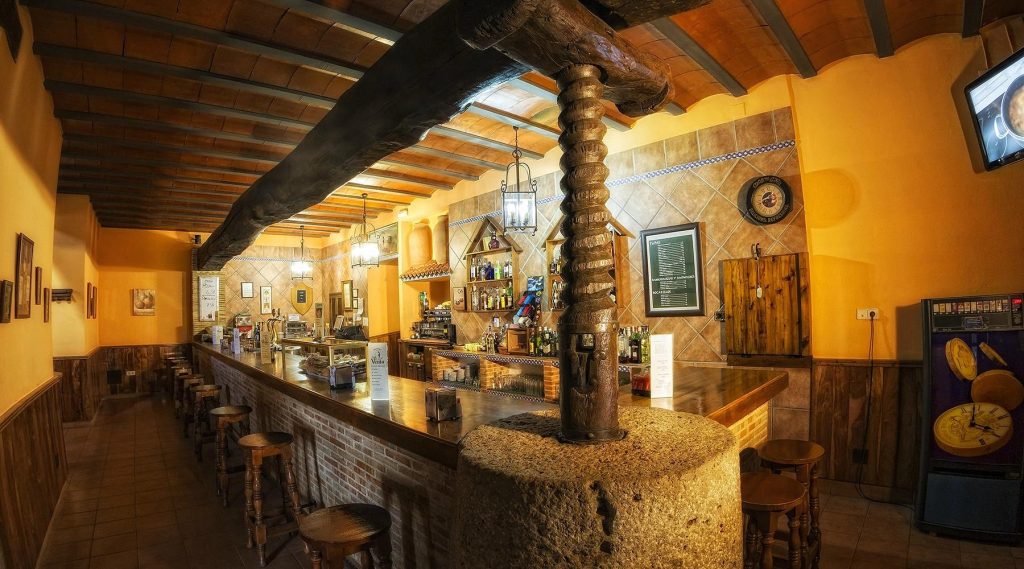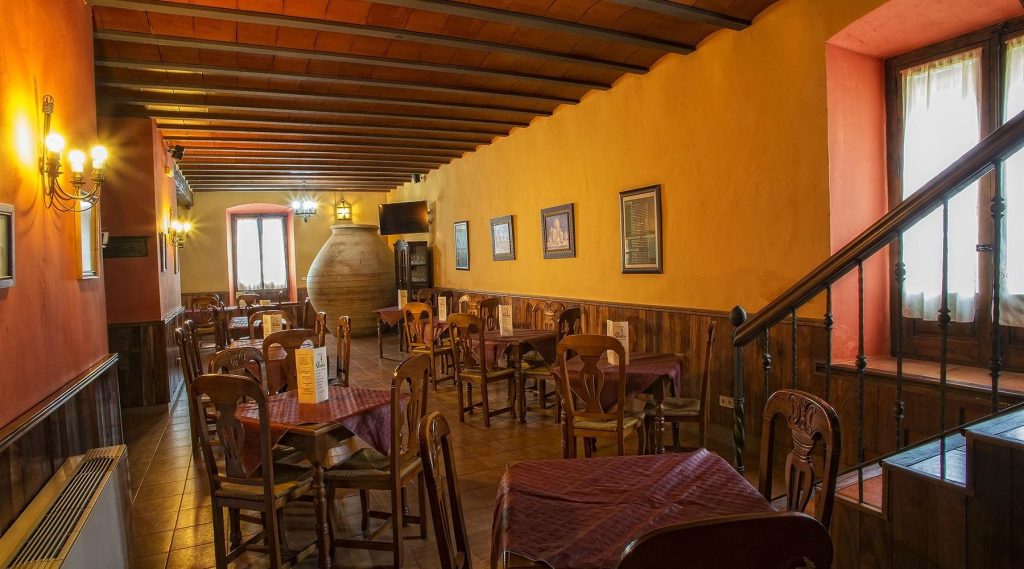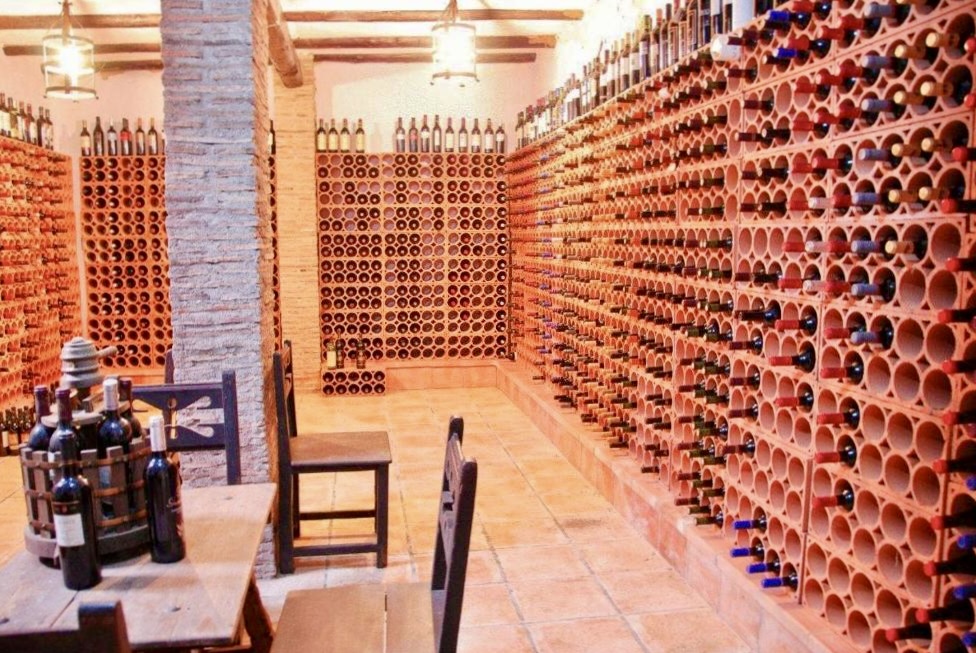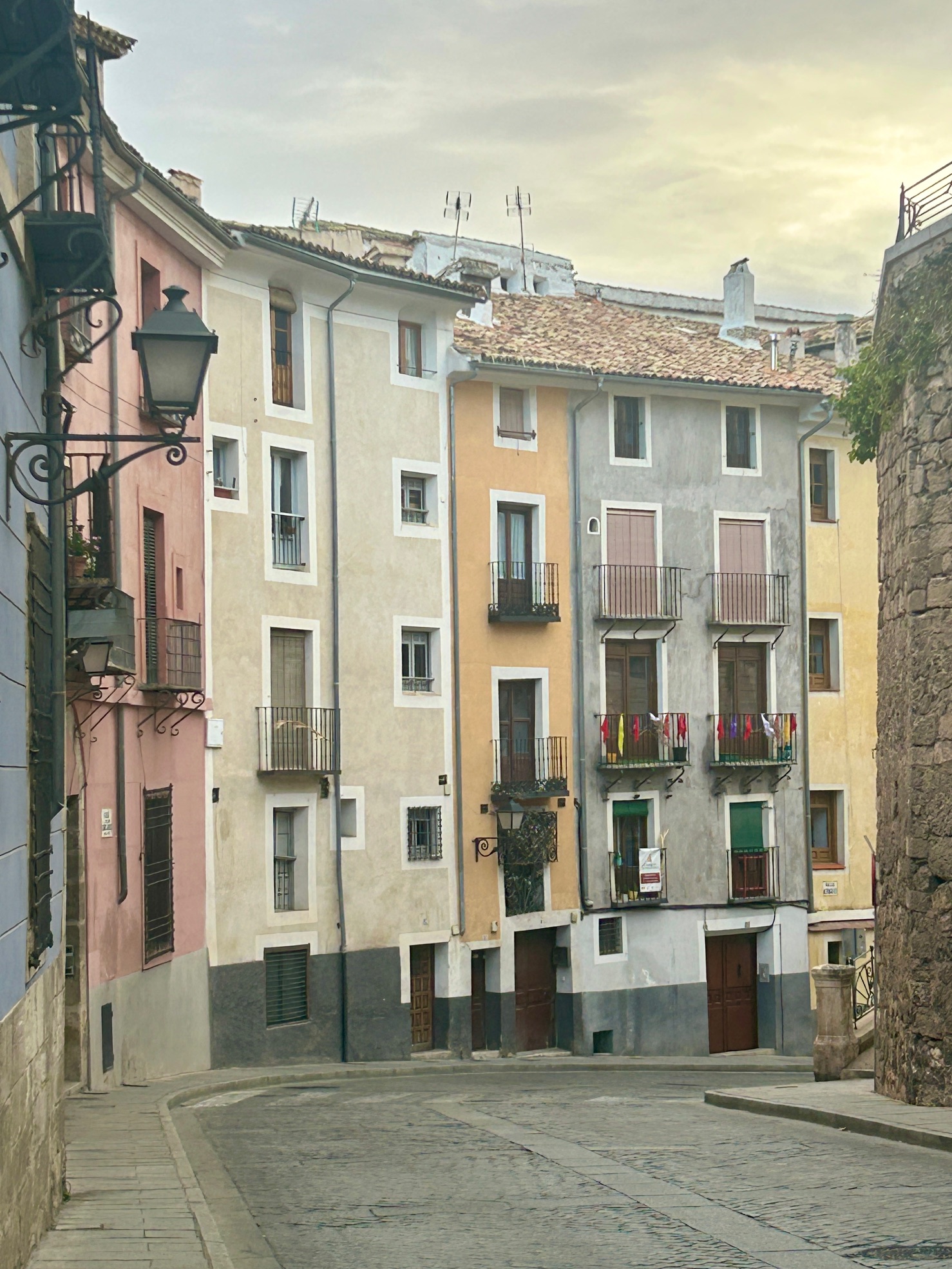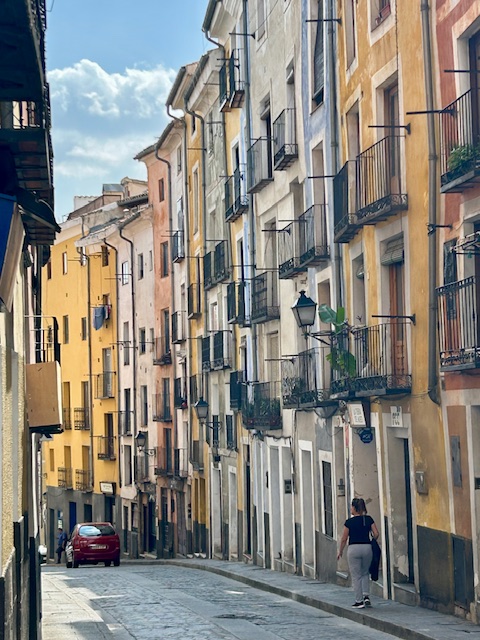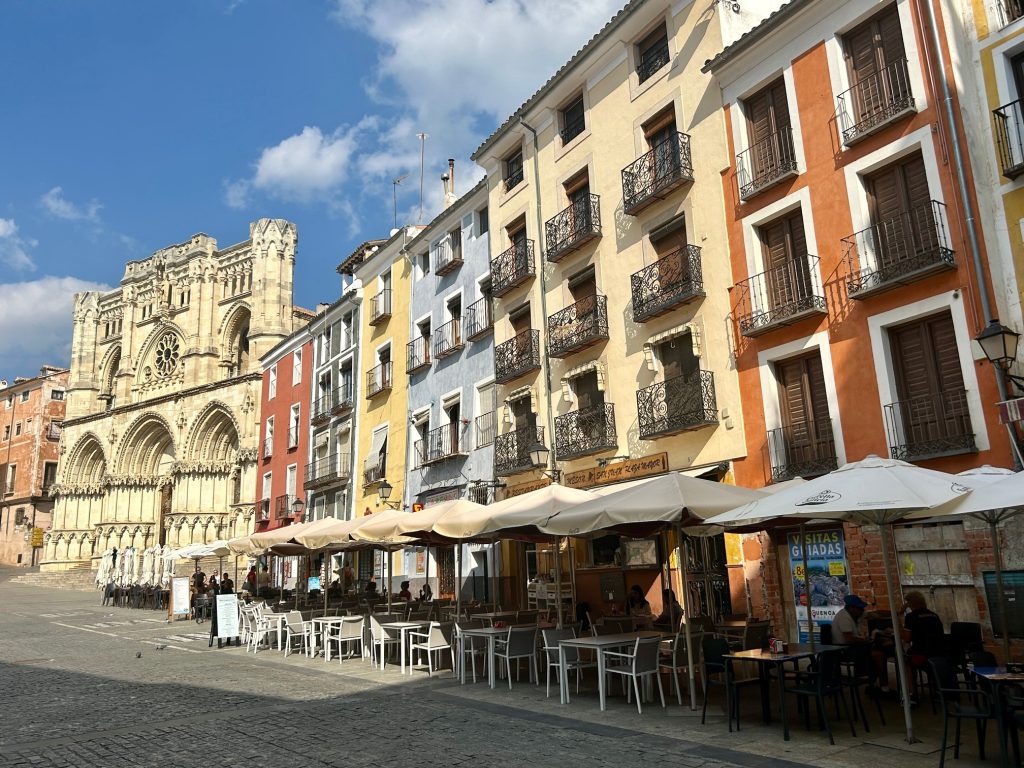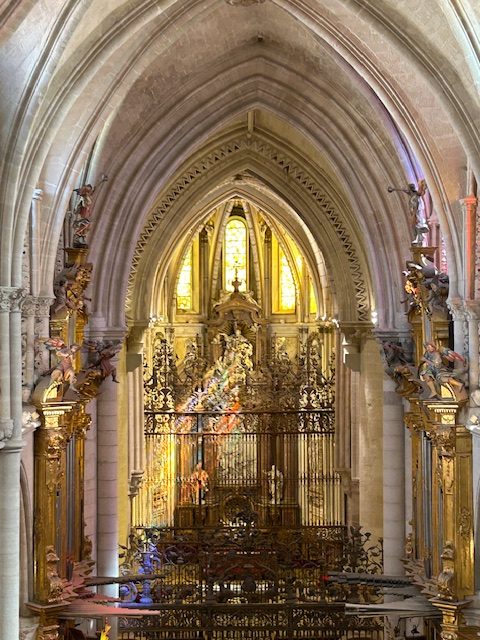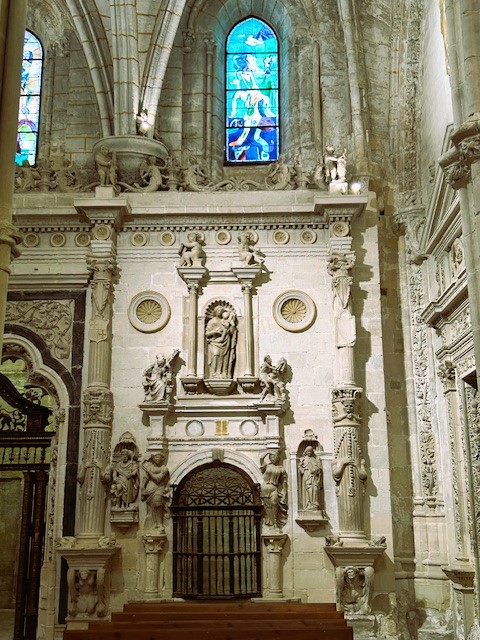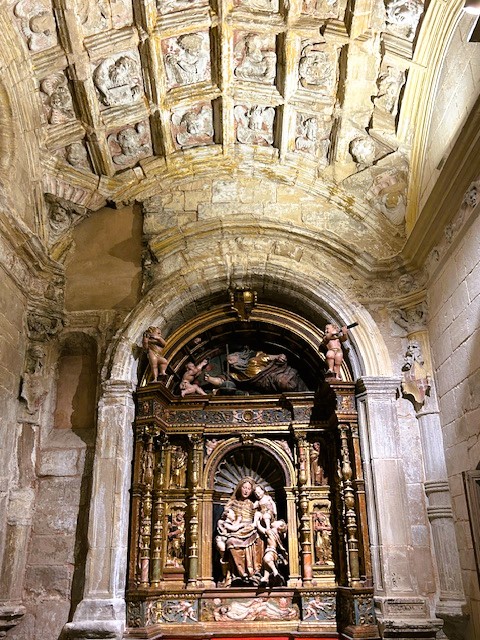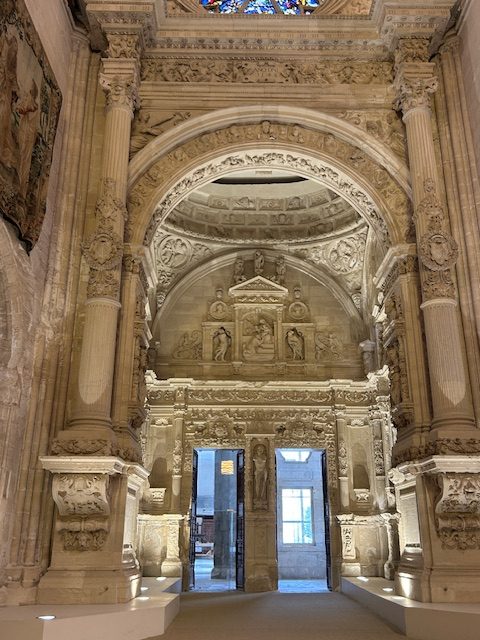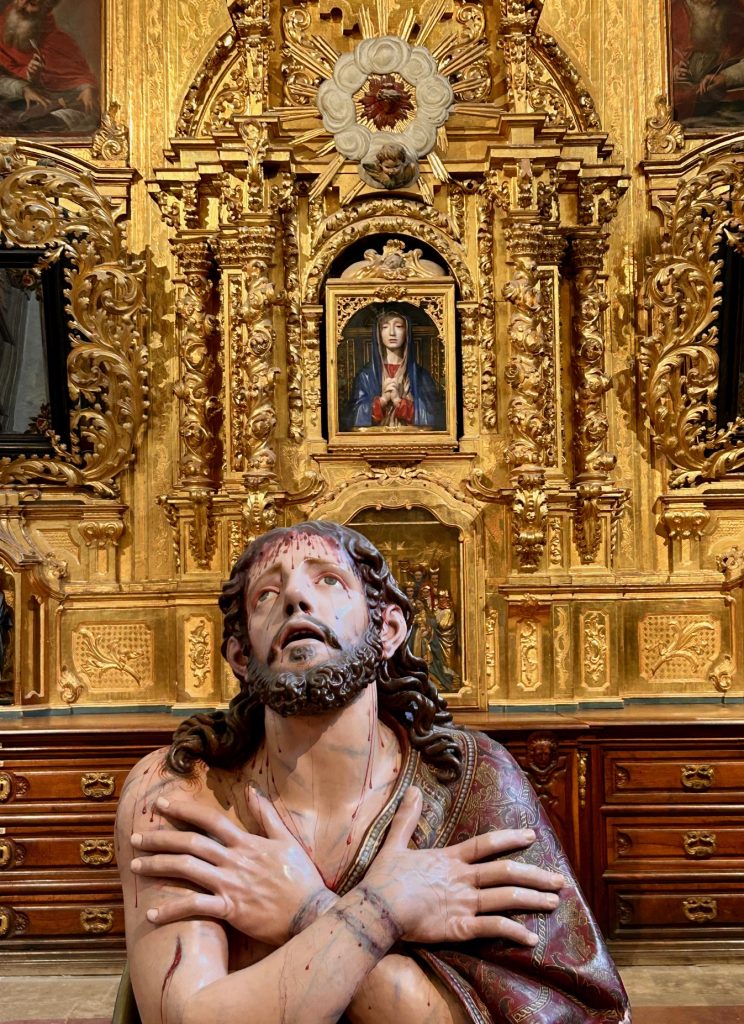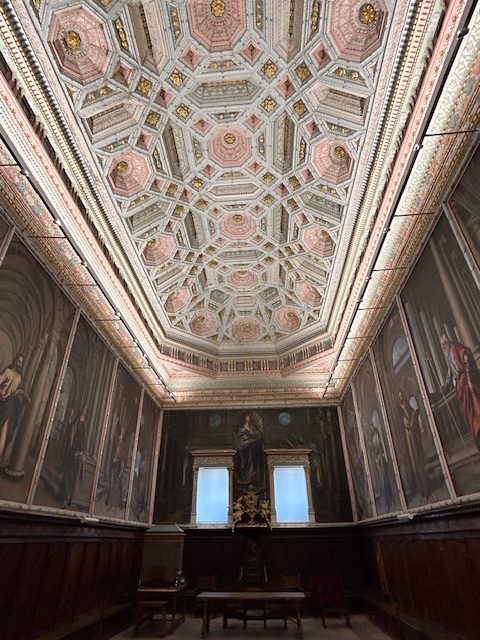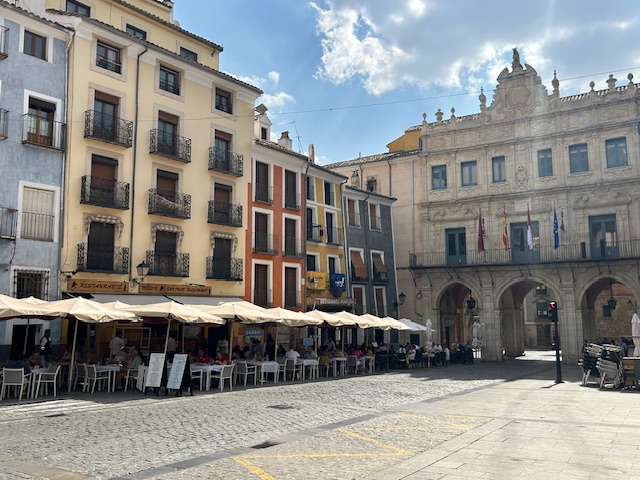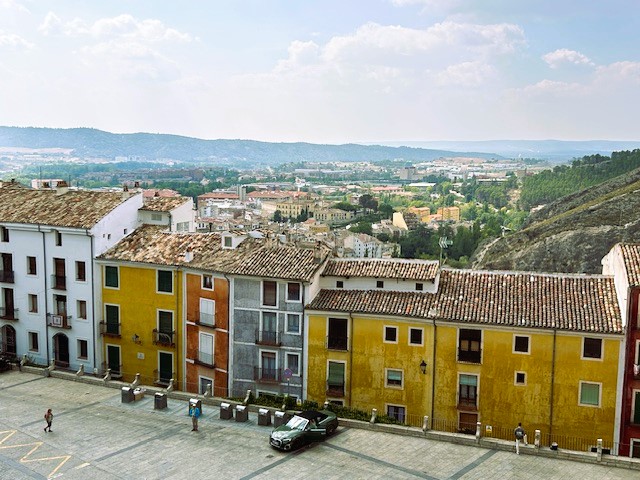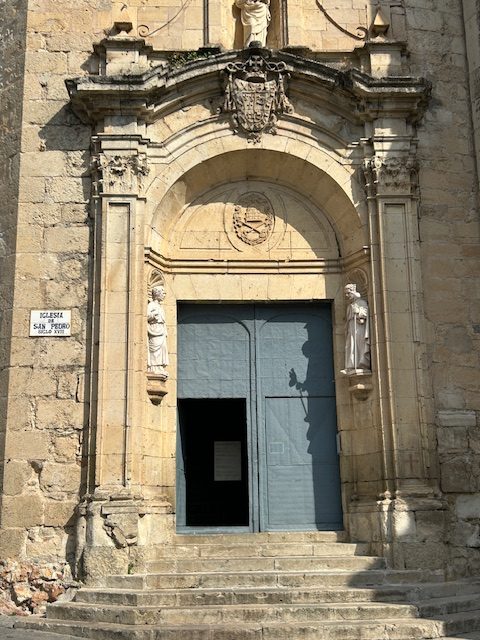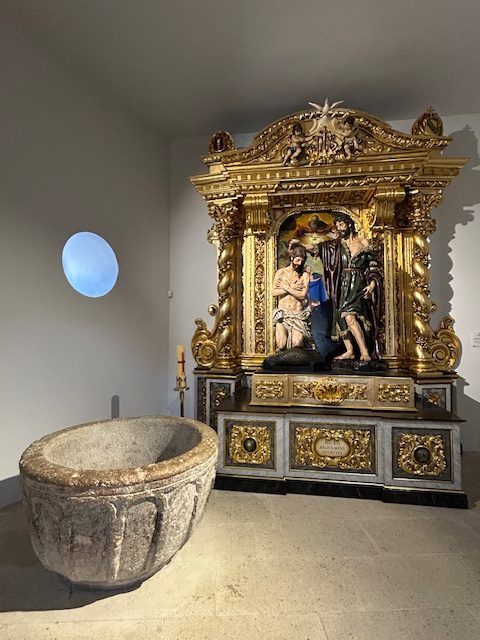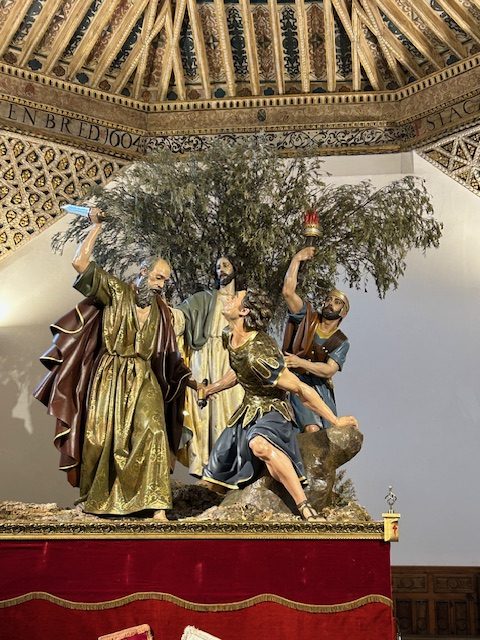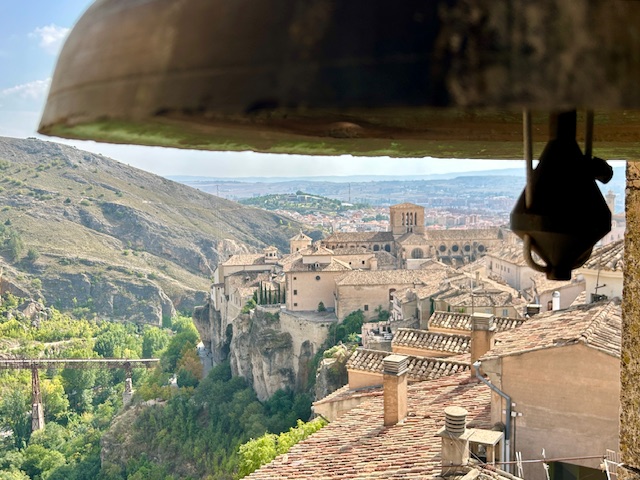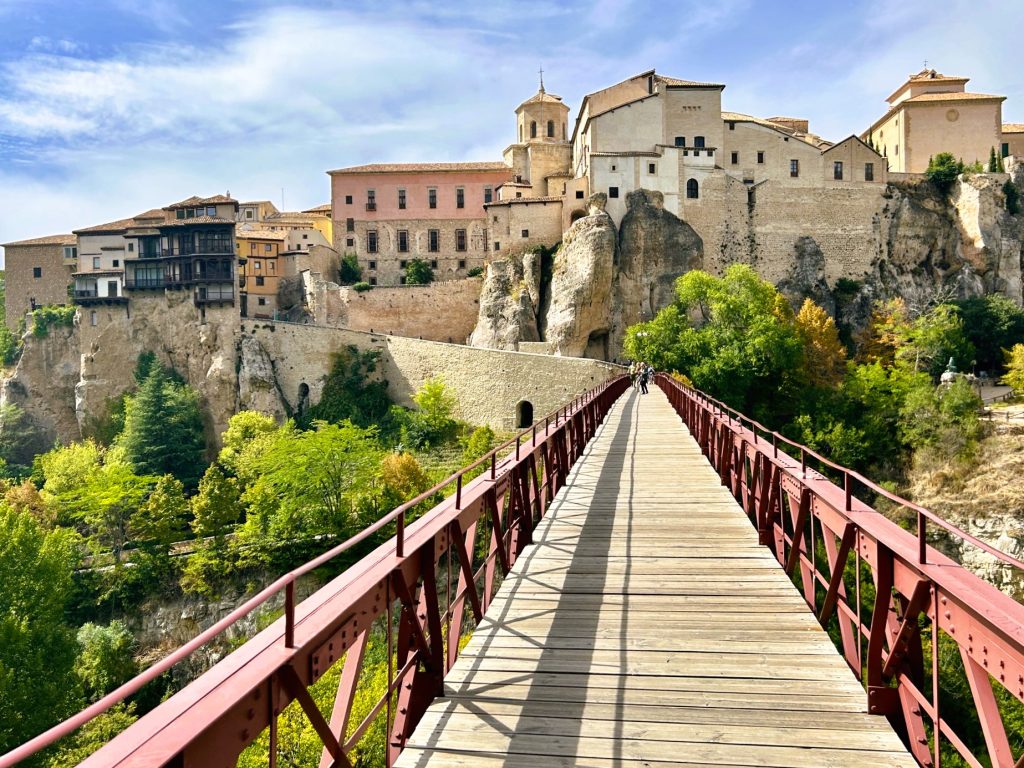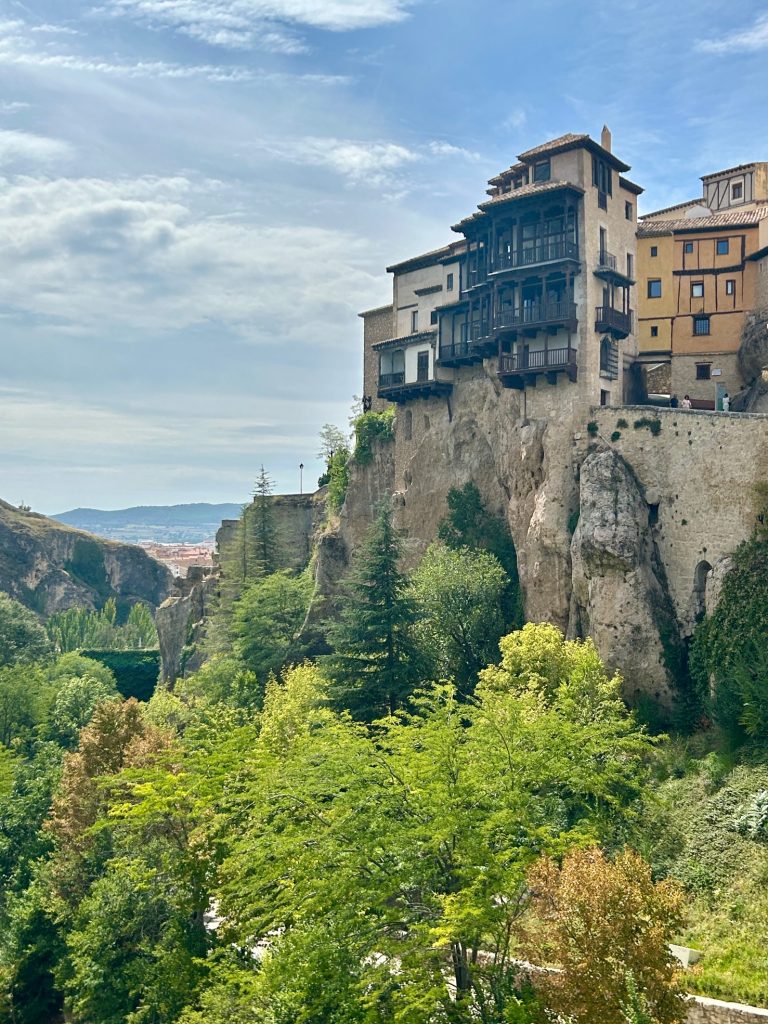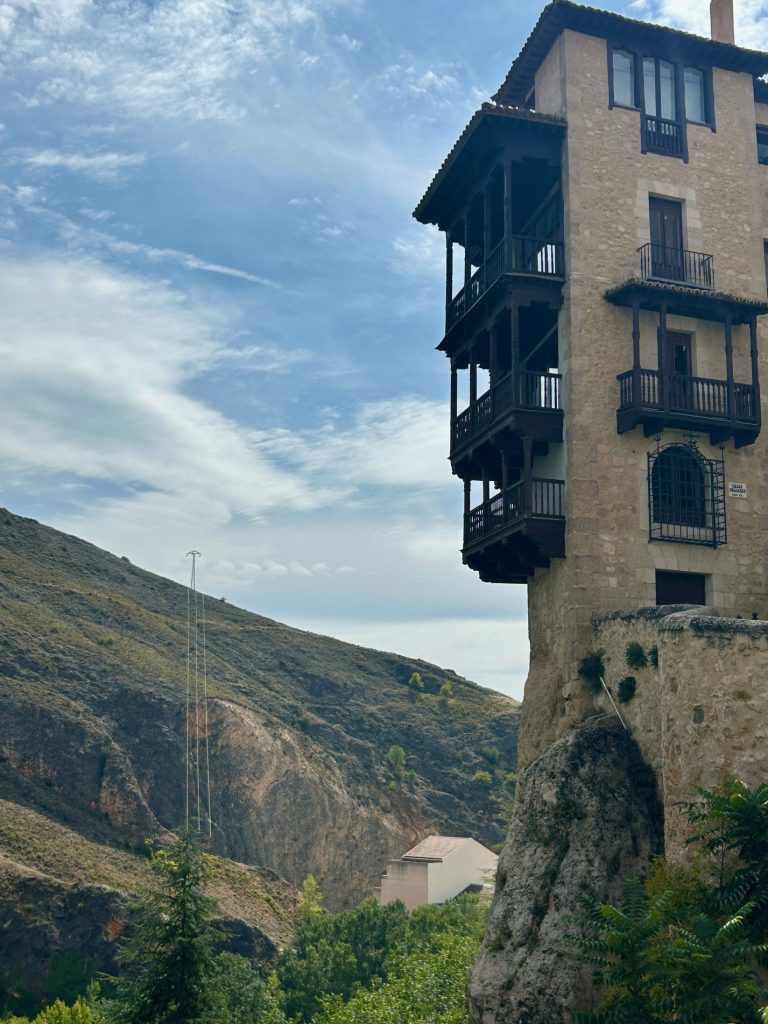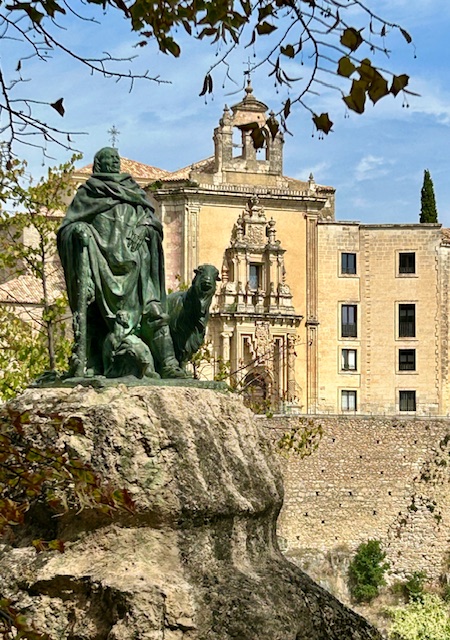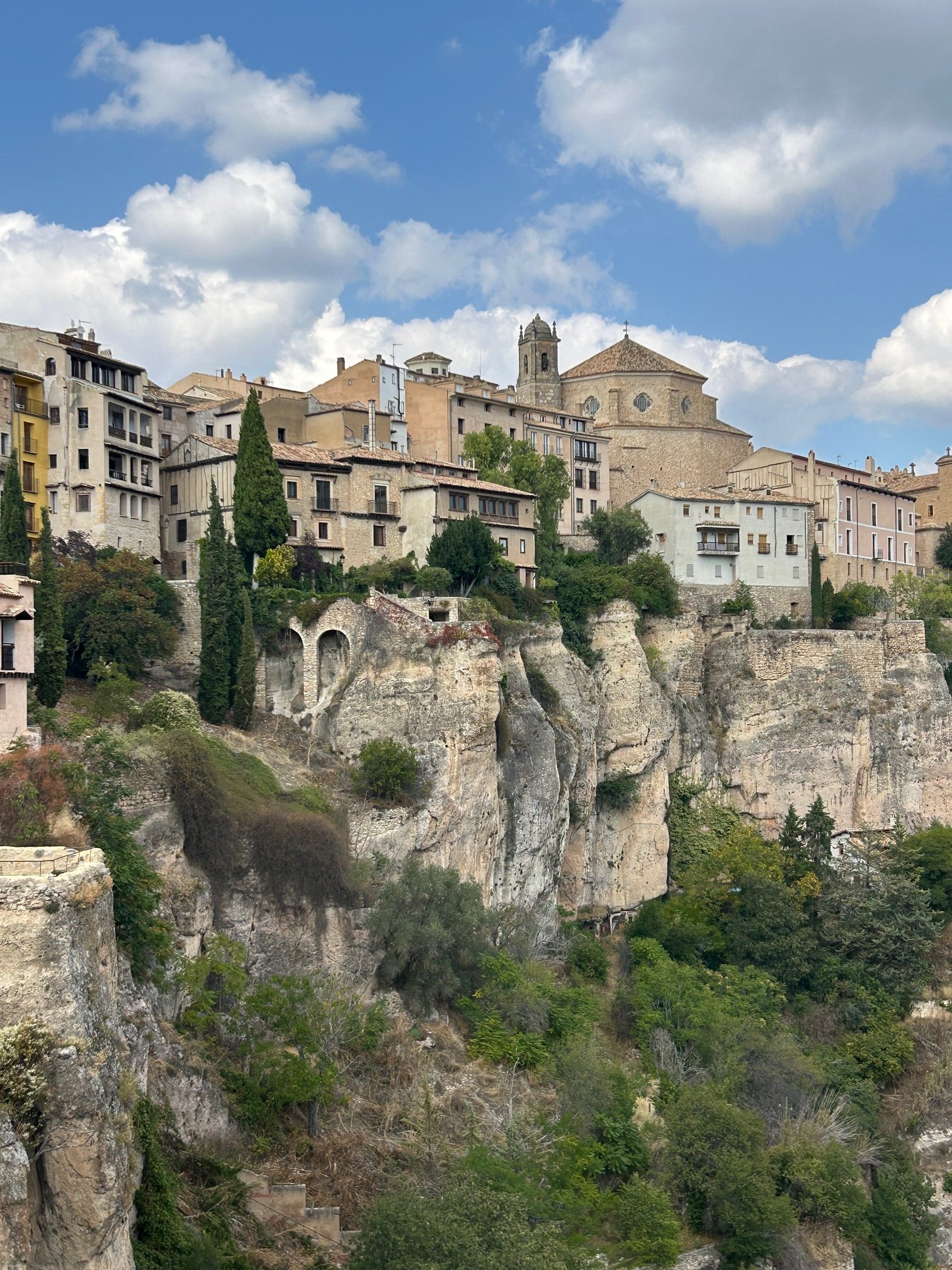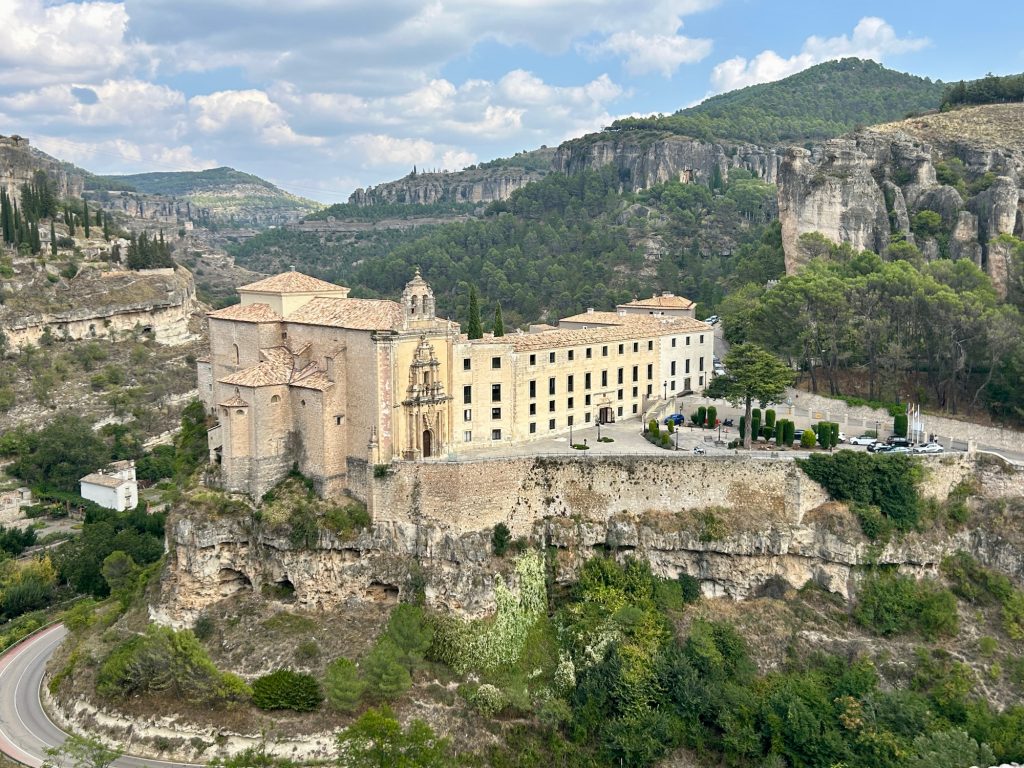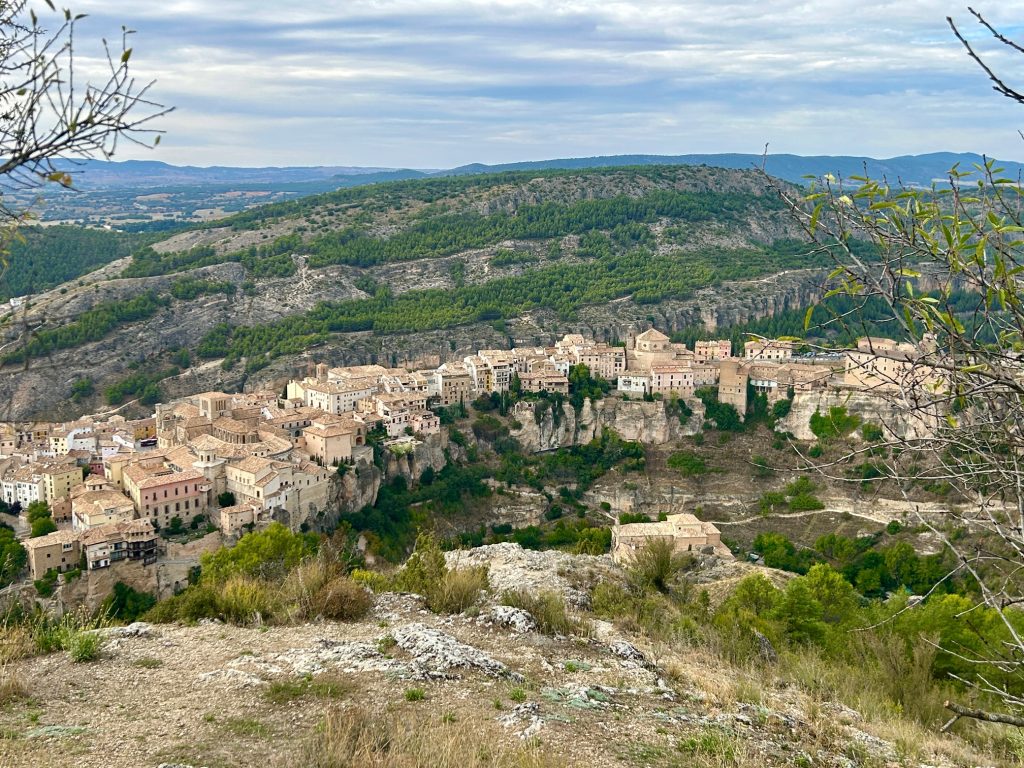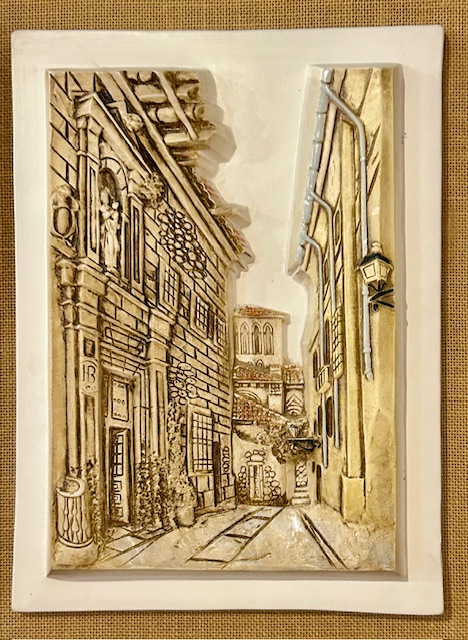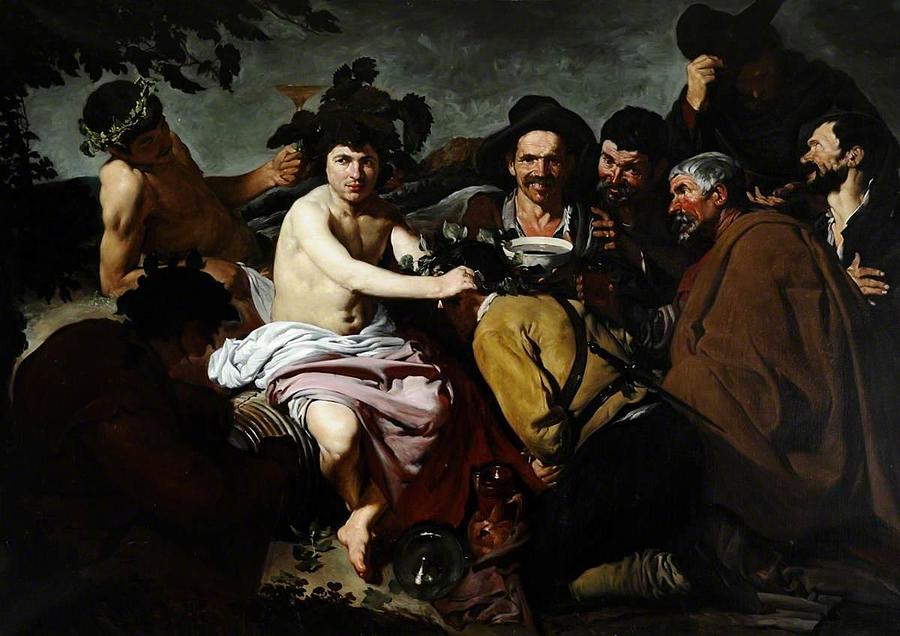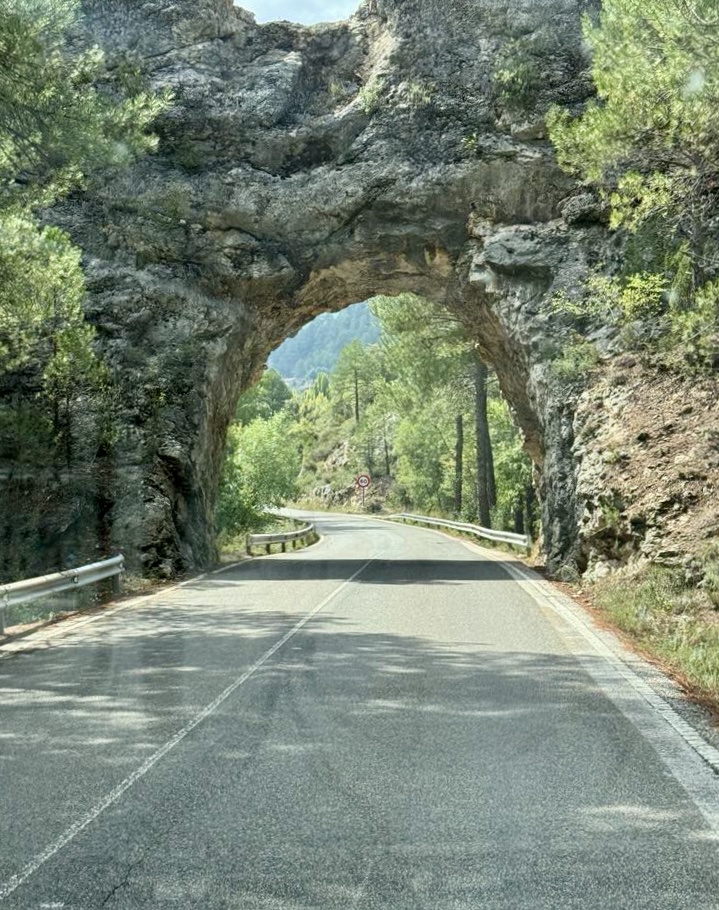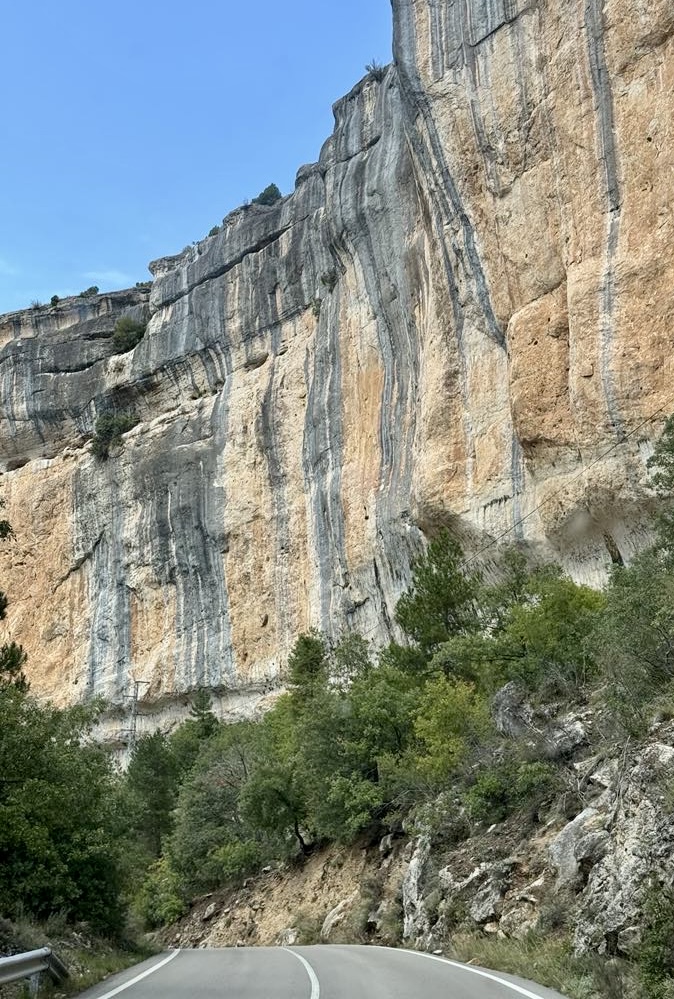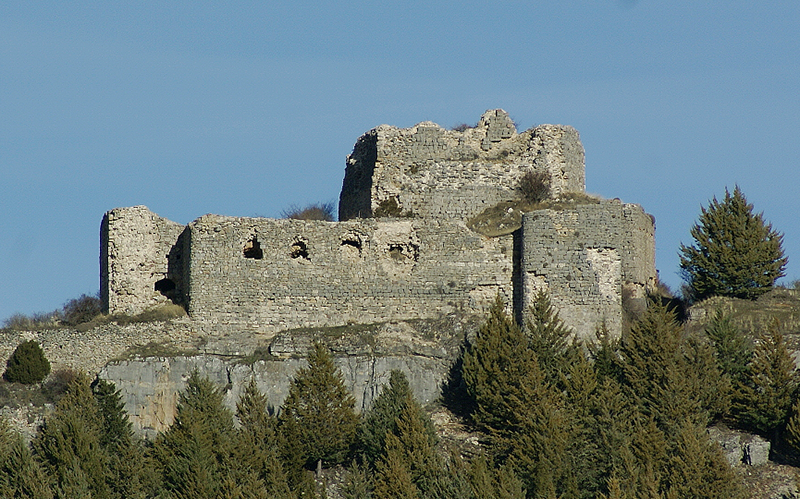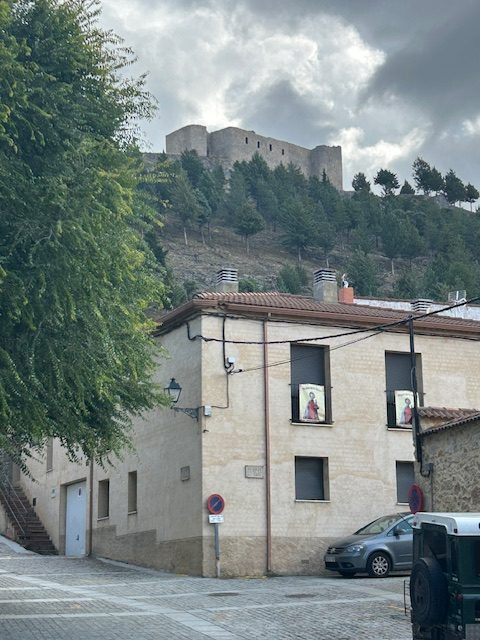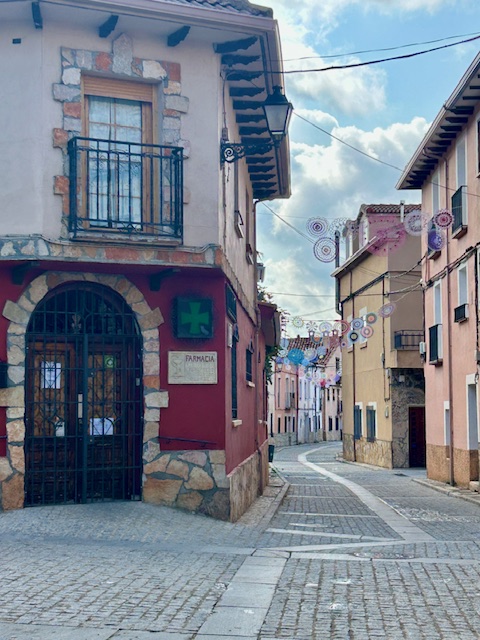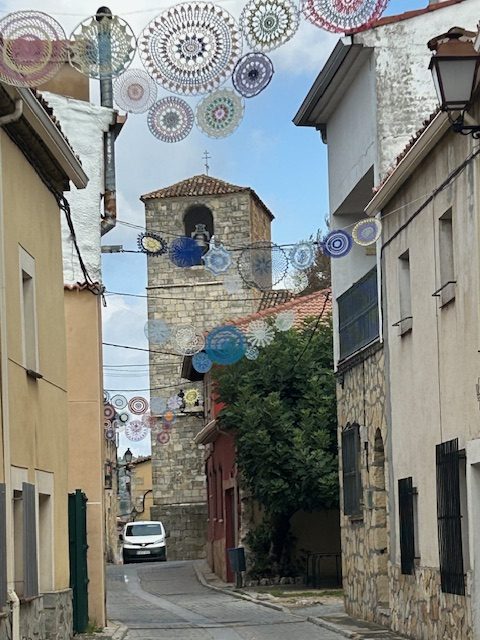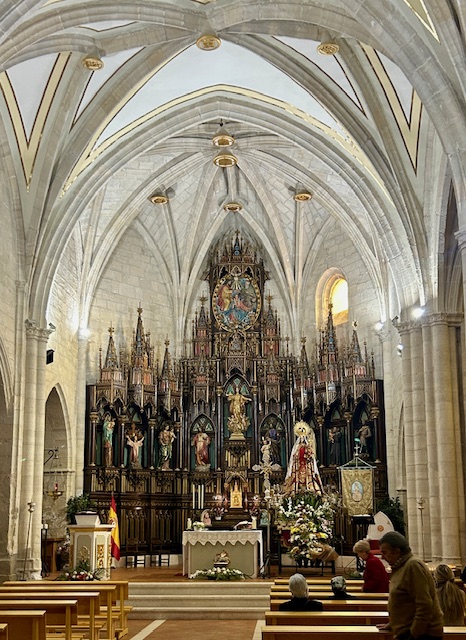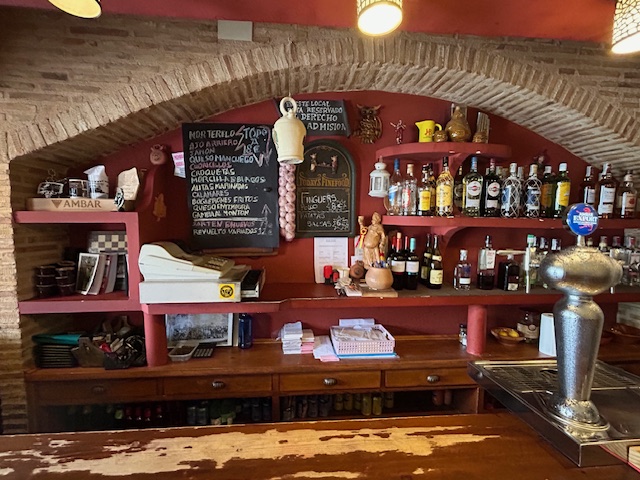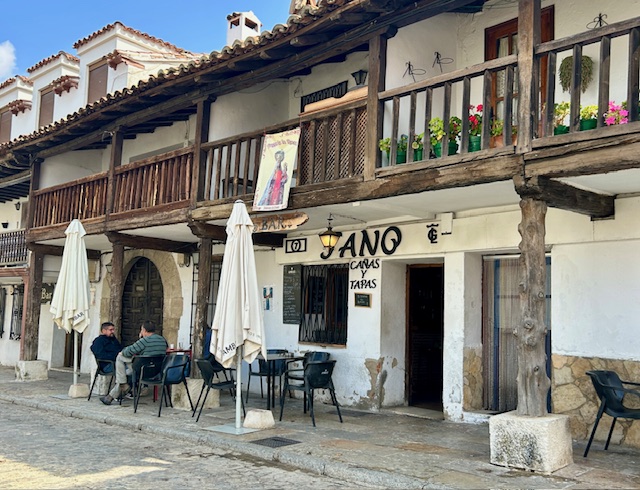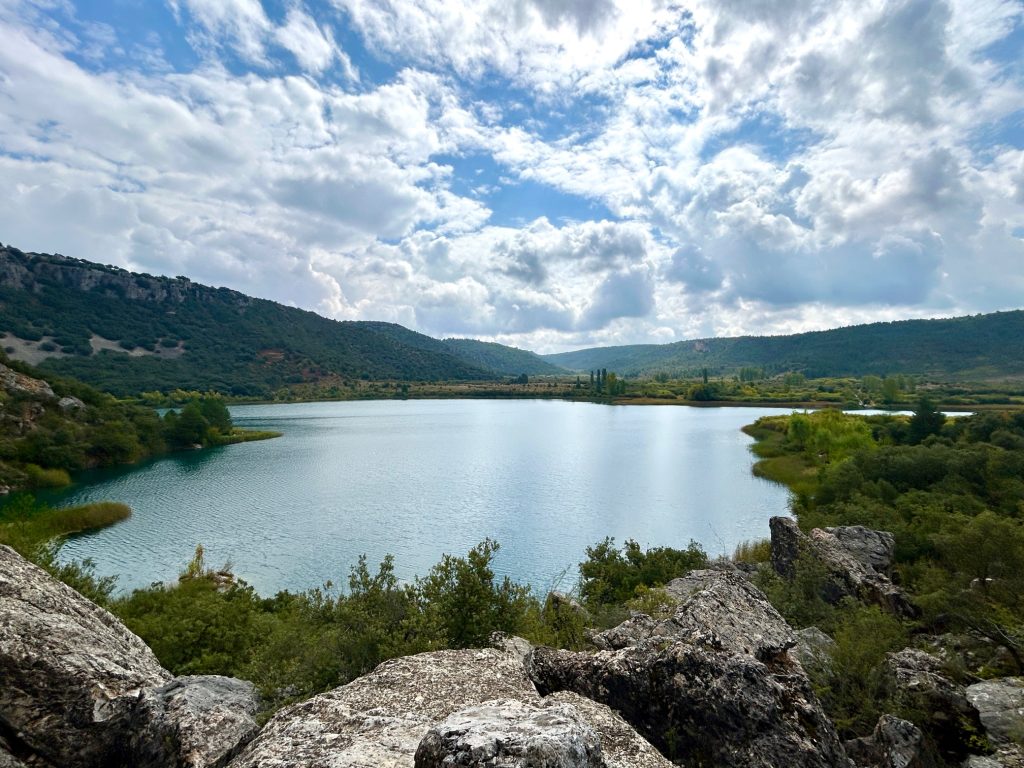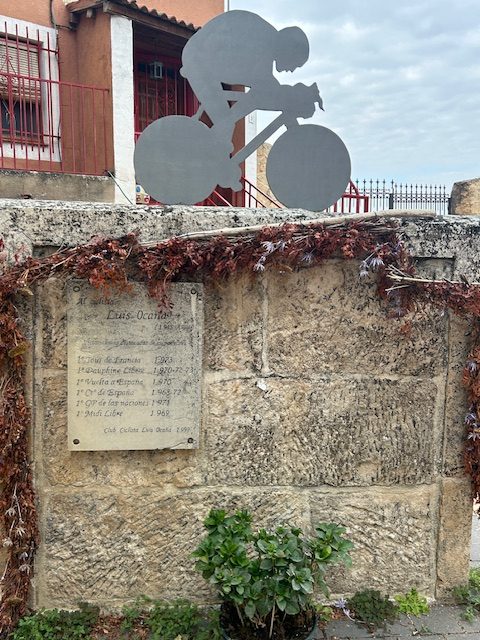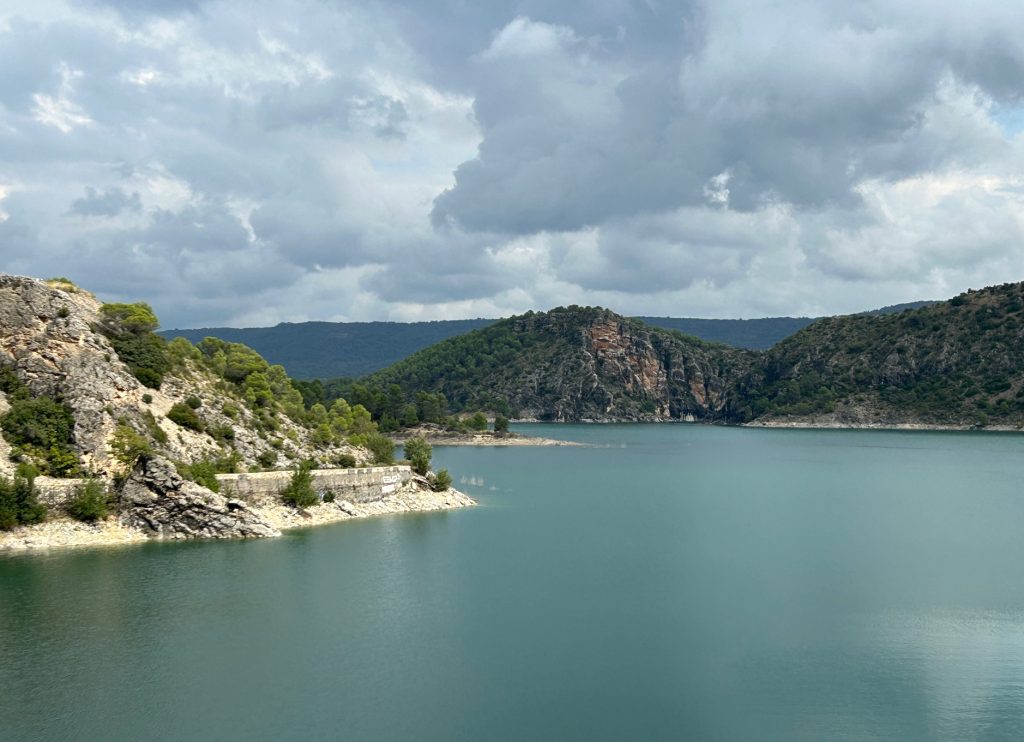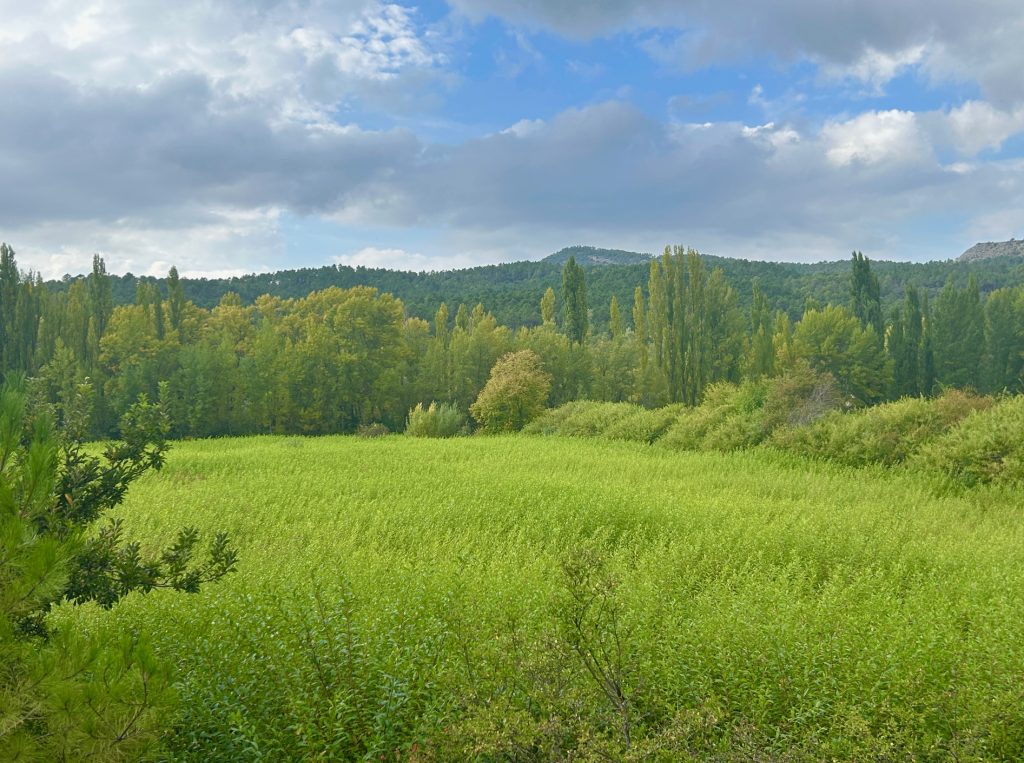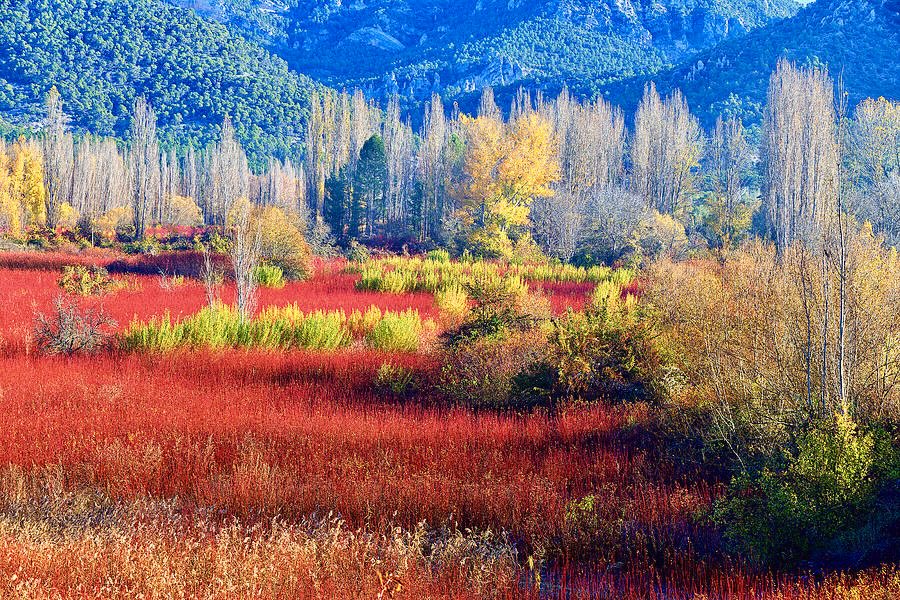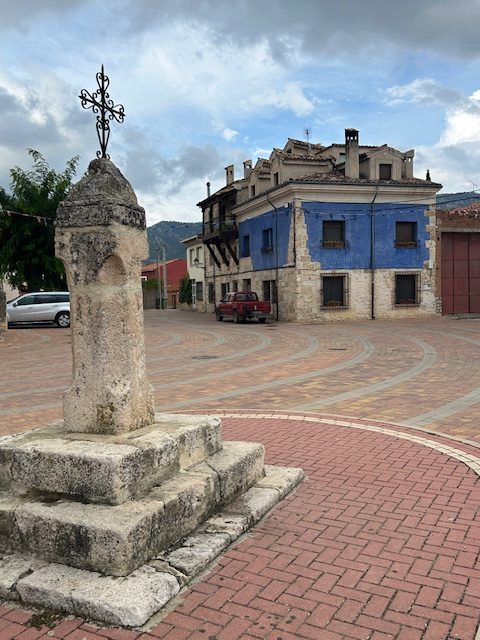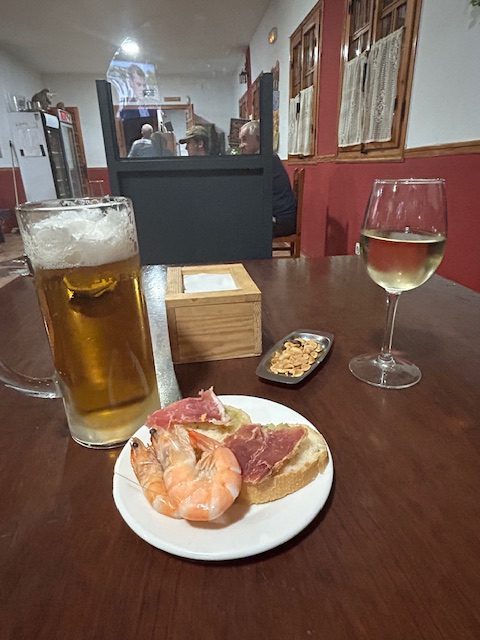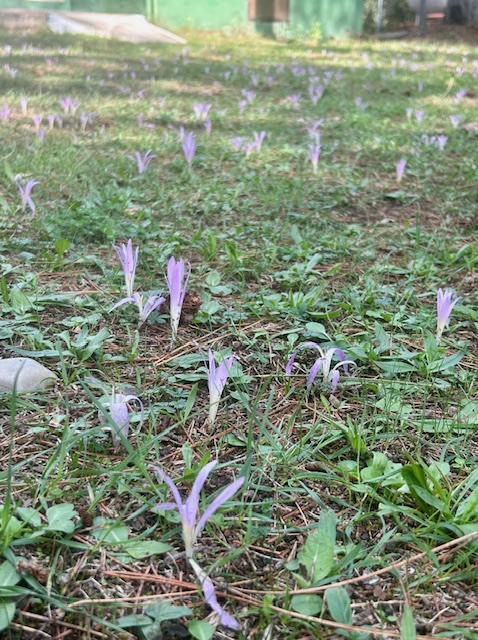Almost completely surrounded by the River Tajo (the Tagus River), Toledo is a small but beautiful city which was Spain’s capital under Charles V for more than 40 years until, in 1561, Philip II made Madrid his capital. Toledo is often described as the ‘city of three cultures’ and, certainly, it’s history and architecture is rich with the influences of it’s erstwhile Christian, Jewish and Muslim communities. Indeed, Toledo’s extensive monumental and cultural heritage prompted UNESCO to declare the city a World Heritage Site in 1986 and it has since become one of Spain’s most popular tourist destinations.
Over the two days we had allowed ourselves to visit Toledo, I was never going to have enough time to see all the historical monuments I had read about and I therefore prioritised them. Top of my list was the Iglesia de San Ildefonso (more often known as the Iglesia de los Jesuits). The Iglesia de Santa Tome, the Sinagoga Santa Maria La Blanca, the Monastery of San Juan de las Reyes and the Alcazar de Toledo had to be in my top five and; of course, I was keen to see the Puenta de Saint Martin and the Puenta de Alcantara (i.e. the two bridges of San Martin and Alcantar together with their attendant city gates). Oh, and not to forget the (former) Mosque of Cristo de la Luz. If it’s religious buildings that you are interested in, the list in Toledo is almost endless.
It may surprise some that Toledo’s Cathedral (the Primatial Metropolitan Cathedral of Saint Mary of the Assumption, to give it it’s full name) was not included in my top five but; I was so fixed for time and; when you’ve seen as many cathedral’s as I have, Toledo’s… well, like I said, I was fixed for time.
We were booked into Camping El Greco on the banks of the Tagus and within easy walking distance of Toledo’s old town or, to be more precise, it’s walled city. It was a short walk to the 14th century Puenta de San Martin, one of the two original bridges into the city (the other being the Roman Bridge, Puenta del Alcantar) and without a doubt my favourite of the two. I did my best to ignore the teenagers zip-lining over the river, took a few photos and then made my way up past the Monastery of San Juan de las Reyes (and after an all too short visit) and then on through the Jewish Quarter until I reached the Iglesia de San Ildefonso.
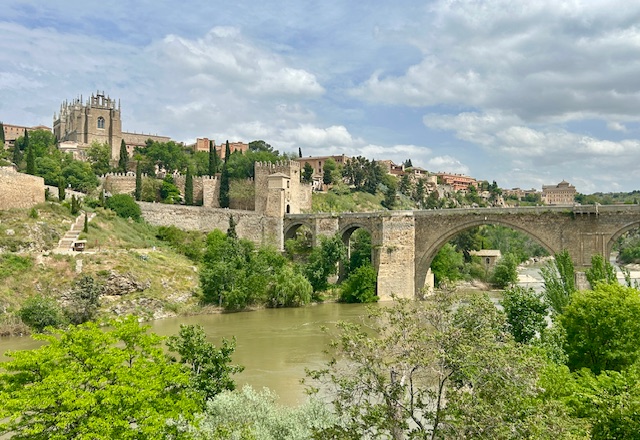
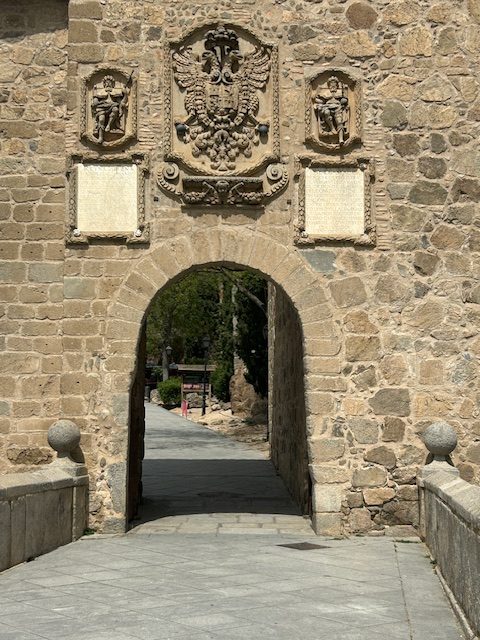
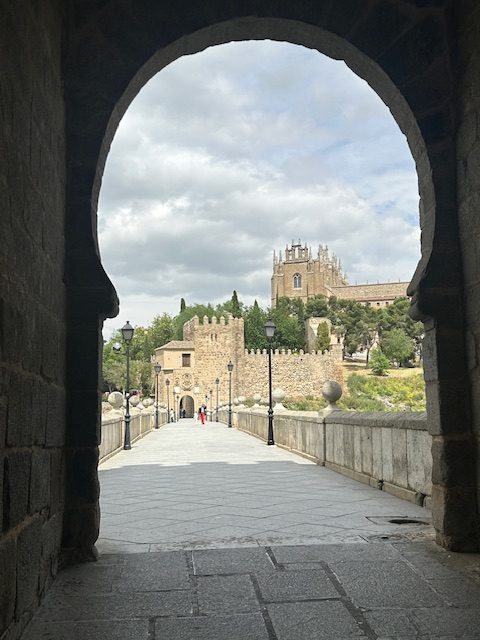

The Monastery of San Juan de los Reyes is the first impressive building that you’ll see in the city after crossing the Sant Martin Bridge. Ferdinand and Isabella commissioned it in 1476 to commemorate the Queen Isabella’s victory at the Battle of Toro (which secured her claim to the throne). It’s run by an Order of Franciscan Monks and was once the largest monastery in the city but much of it was destroyed by Napoleon’s troops during the Peninsula War. It has a beautiful enclosed cloister and garden area with a cluster of orange tree. It makes for a real oasis in this busy city.

My next stop was the Iglesia de San Ildefonso. I suspected the Jesuit church would be a beautiful church in it’s own right (the Jesuits rarely did things by halves) but I knew too that it is possible to access it’s bell tower and I figured that from this vantage point there would be some exceptional views over the city. I wasn’t disappointed on either count. Of everything I saw in Toledo over the two days we were there, this building is my favourite.






It was during my visit to the Iglesia de Ildefonso that my list of priorities changed a little. In the church I learned it is possible to buy a tourist bracelet for just 14 Euros which allows entry into seven of Toledo’s most impressive monuments (at least twice and for as long as you like provided it is open and you are wearing the bracelet). The bracelet is convenient and great value for money since entry into each of the seven monuments is at least 4 Euros but, be warned, it does not cover entry into either the Cathedral or the Alcazar of Toledo. That fact saw the Alcazar disappear from my list of “must-sees”. On this occasion I would make do with a walk around the outside of both the Cathedral and the Alcazar. I think entry into the Alcazar is free on Sunday’s anyway.
It is easy to pinpoint both Toledo Cathedral and the Alcazar of Toledo. Being 90 metres tall, the 13th century cathedral’s spire is visible from almost anywhere in the city while the Alcazar of Toledo (originally a Moorish Palace before being converted into a Castillean Palace) is the most prominent building in the city and occupies the highest point of the city. It’s a massive structure, built more like a fortress, and was in fact used as a defensive stronghold by Nationalists during the Spanish Civil War. It was badly damaged at that time but has since been restored. I passed the Cathedral on my way up to the Alcazar and, to be honest, while they are two of the most significant buildings on the Toledo skyline, I didn’t feel bad about passing them by.

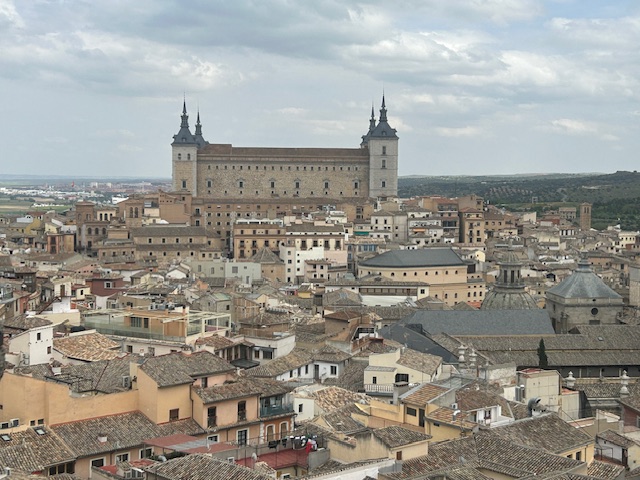


From the Alcazar I retraced my steps to the 13th century Sinagoga Santa Maria La Blanca in the old Jewish Quarter of the city. There are two well preserved synagogues from the Middle Ages in Toledo, the Santa Maria La Blanca and the Transito Synagogue (which also contains a small museum). I don’t recall ever having been into a synagogue before but the Sinagoga Santa Maria La Blanca quickly became my second favourite building in Toledo. It is remarkable in it’s simplicity. There are no fixtures nor fittings on show; no furnishings; just white walls, columns and stone arches and a gallery (where the Jewish women stand?). Of course, it may not have always been so but it’s simple elegance so impresses me. It is beautiful and, ironically, not unlike a couple of mosques that I have also been inside. The synagogue was converted into a church during one of the city’s pogroms, hence it’s Christian name.
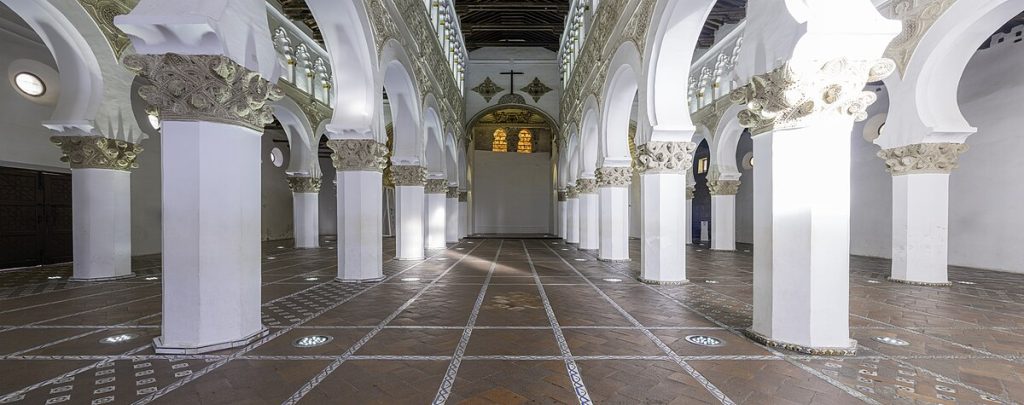

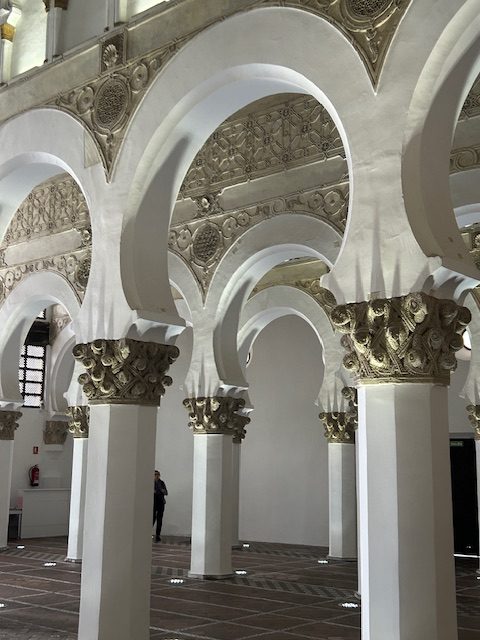

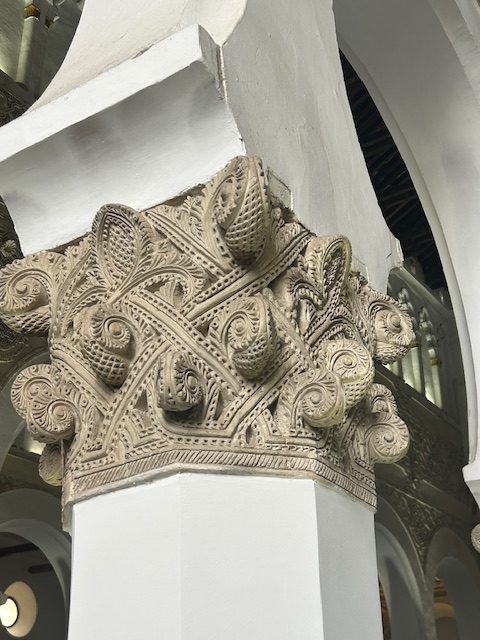
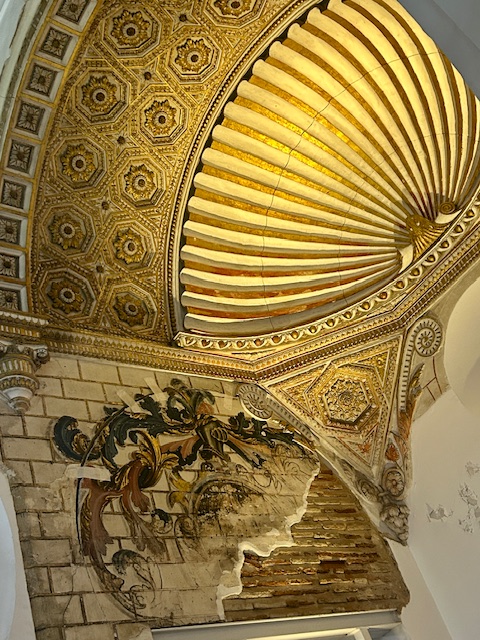
Another building which had it’s name changed by the Christians was the Mezquita del Crist de la Luz (the Mosque of Christ of the Light). This small but imposing onetime mosque was built in 999 and is recognised as the oldest standing building in Toledo and one of the oldest in Spain. I don’t know for sure but it wouldn’t surprise me if this change of name also occured during or following a pogrom (this time against Islam).
My next planned visit was to the Iglesia de Santa Tome (Saint Thomas’s). My interest in this relatively small and unassuming church was one of El Greco’s more famous paintings – The Burial of the Count of Orgaz. It’s impressive but it doesn’t rate among my favourites.


I did get to see a fair few other places while wandering Toledo and all but one impressed me. It was the Plaza de Zocodover which disappointed me. I’d read so many positive things about the square (e.g. it has long been the social hub of the city and the liveliest of places) and I was really looking forward to sitting on a terrace, people watching, over a glass or two of wine. It just didn’t work for me and I think it is because this part of the city has more than it’s fair share of souvenir shops and far too many tourists. It is inevitable that a city with all the attractions Toledo has and being so close to Madrid (it’s little more than half an hour by train) will attract numerous tourists and, hey, I’m a tourist but; what gets my goat are those countless groups of people (with absolutely no spacial awareness) following men and women waving umbrellas or flags in the air who insist upon suddenly stopping and blocking the city’s narrow winding streets for a chin-wag without consideration for anyone else. Know what I mean? Okay, sorry about that. Rant over.

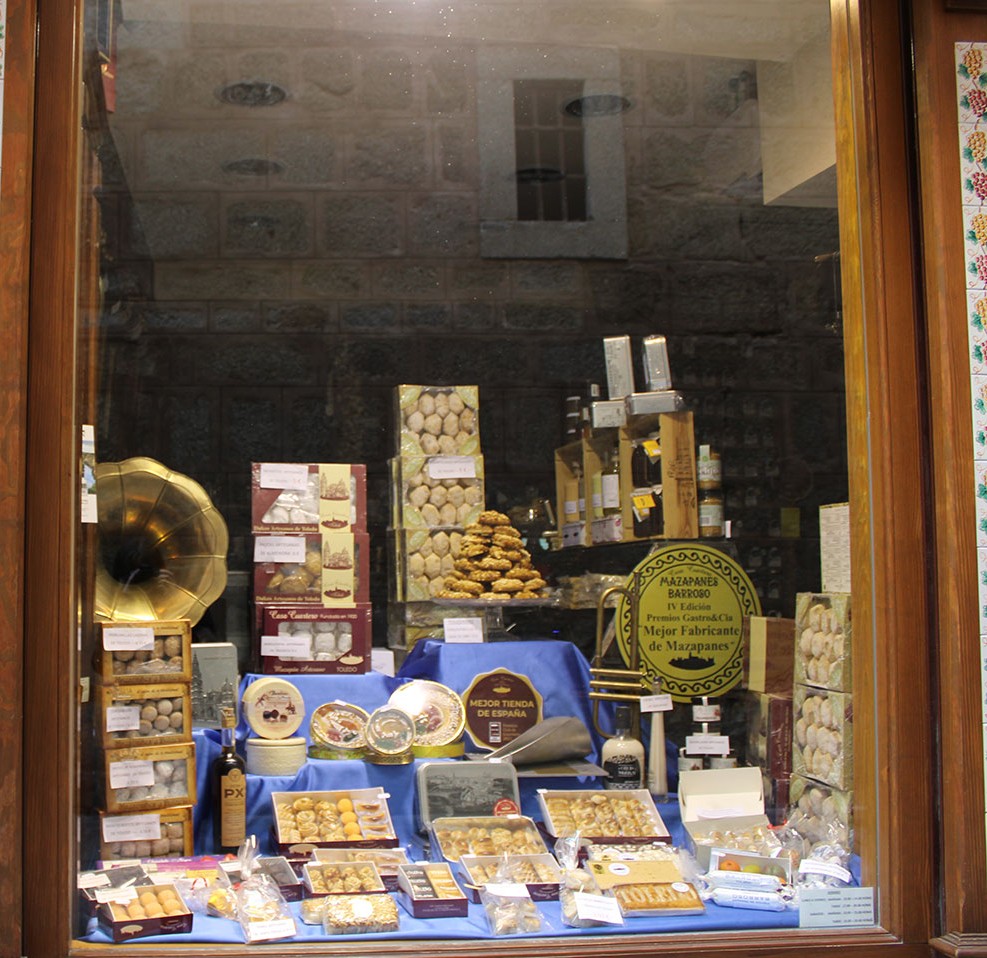
The walled city is very touristy and it contains an abundance of shops selling nothing but marzipan (which I did rather like the look of but how do they survive?) and; a great many souvenir shops selling tin suits of armour and toy knives (which, I suppose are intended to pay homage to Toledo’s famous steel). More interesting is the city’s preoccupation with Manchego Cheese. The city even has a Manchego Museum (the Museo del Queso Manchego Toledo), so concerned are they to promote and preserve the many different varieties of this local cheese, and the museum offers cheese tastings complete with local wines. It’s a rhetorical question but, how often have we attended wine tasting with cheese being used to enhance the taste of the wine as against our attending a cheese tasting session where the wine is simply used as a palate cleanser? There’s a turnaround.
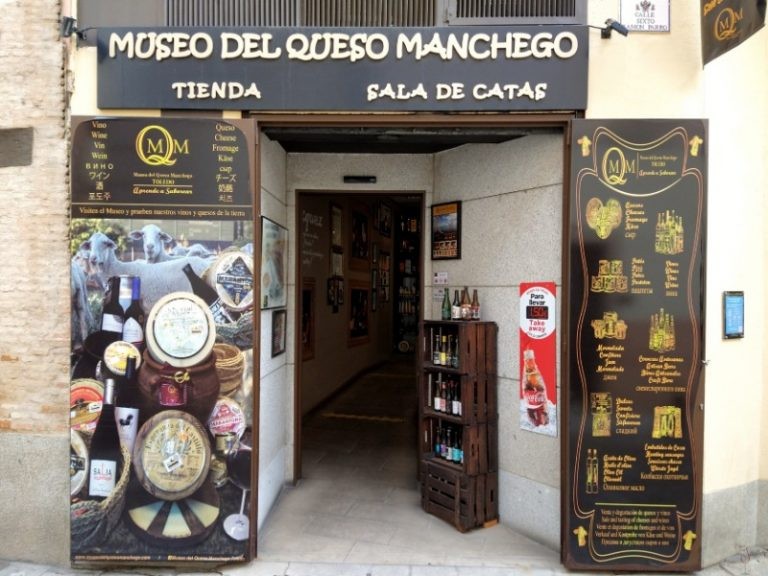

Overall, I really like Toledo. There are so many interesting monuments to see and the city has a lovely feel about it (notwithstanding all the tourists). We’d have liked to stay longer but the walled city is on a hill and there are a great many staircases and steep slopes which Nala (in her wheels) would find difficult to negotiate. There are some strategically placed escalators and at least one elevator but, even so, the narrow crowded lanes would cause her a problem.
A pleasant and abiding memory of our all too short visit to Toledo will be of Vanya and I sitting on the porch of the bar back at the El Greco campsite on our last night, with wine in hand, gazing at the city’s skyline and watching the many different monuments light up as darkness descended.



